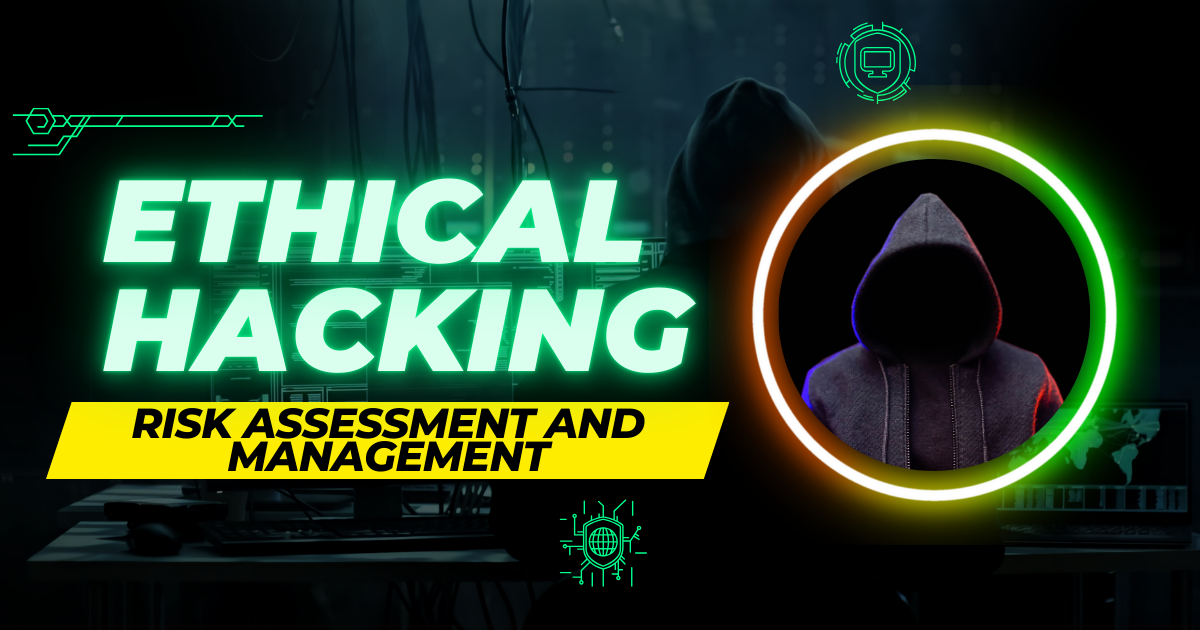Risk Assessment and Management in Cybersecurity
 Devyush Raturi
Devyush Raturi
In the dynamic and often perilous landscape of cybersecurity, proactive defense is paramount. Organizations cannot afford to react to threats; they must anticipate and mitigate them. This is where risk assessment and management come into play, forming the cornerstone of a robust security strategy. Ethical hackers, armed with their knowledge of vulnerabilities and attack vectors, are instrumental in this process. This article will explore the fundamentals of risk assessment and management in cybersecurity.
Understanding Risk
In cybersecurity, risk is the potential for loss or damage resulting from a threat exploiting a vulnerability. It's a function of three key components:
Threat: A potential danger that could exploit a vulnerability (e.g., malware, phishing, DDoS).
Vulnerability: A weakness in a system, application, or process that a threat can exploit (e.g., outdated software, weak passwords, misconfigurations).
Impact: The potential consequences of a successful attack (e.g., data breach, financial loss, reputational damage).
The Risk Assessment Process
Risk assessment is the process of identifying, analyzing, and evaluating potential risks to an organization's information assets. It typically involves the following steps:
Asset Identification: Identifying and categorizing critical assets, such as data, systems, and applications.
Threat Identification: Identifying potential threats that could target these assets.
Vulnerability Assessment: Identifying weaknesses in systems and processes that could be exploited.
Likelihood Assessment: Determining the probability of a threat exploiting a vulnerability.
Impact Assessment: Determining the potential consequences of a successful attack.
Risk Evaluation: Combining likelihood and impact to determine the overall risk level.
Risk Prioritization: Prioritizing risks based on their severity and likelihood.
Risk Management Strategies
Once risks have been assessed, organizations must develop strategies to manage them. Common risk management strategies include:
Risk Avoidance: Eliminating the risk by avoiding the activity or asset that creates it.
Risk Mitigation: Reducing the likelihood or impact of the risk by implementing security controls.
Risk Transfer: Transferring the risk to a third party, such as through insurance.
Risk Acceptance: Accepting the risk and its potential consequences.
Security Controls
Security controls are measures implemented to mitigate risks. They can be:
Technical Controls: Hardware or software solutions, such as firewalls, intrusion detection systems, and encryption.
Administrative Controls: Policies, procedures, and guidelines, such as access control policies and incident response plans.
Physical Controls: Measures to protect physical assets, such as locks, security cameras, and access badges.
The Role of Ethical Hackers
Ethical hackers play a crucial role in risk assessment and management by:
Performing Vulnerability Assessments: Identifying weaknesses in systems and applications.
Conducting Penetration Tests: Simulating real-world attacks to assess the effectiveness of security controls.
Providing Security Recommendations: Advising organizations on how to mitigate risks and improve their security posture.
Contributing to Incident Response: Assisting in the investigation and remediation of security incidents.
Continuous Monitoring and Improvement
Risk assessment and management is an ongoing process. Organizations must continuously monitor their security posture, update their risk assessments, and improve their security controls to adapt to evolving threats.
Importance of a Framework
Using a recognized risk management framework, such as NIST’s Risk Management Framework (RMF), ISO 27005, or COBIT, can provide a structured and standardized approach to risk management.
Conclusion
Risk assessment and management are essential components of a proactive cybersecurity strategy. By identifying, analyzing, and mitigating potential risks, organizations can protect their valuable assets and maintain business continuity. Ethical hackers are vital in this process, providing the expertise and skills needed to identify and address vulnerabilities. By embracing a risk-based approach to security, organizations can build a more resilient and secure digital environment.
Subscribe to my newsletter
Read articles from Devyush Raturi directly inside your inbox. Subscribe to the newsletter, and don't miss out.
Written by
